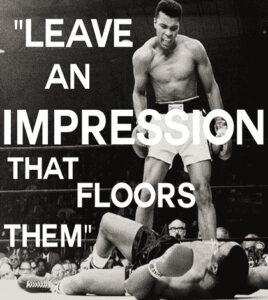
Ruairi Spillane
Founder Outpost Recruitment
But, most job applicants don’t pay enough attention or give enough time to their Canadian resume. Especially newcomers, many of whom think they know a better way. Spoiler alert: Canadian hiring managers like things done a certain way, and even if you know a better way, you won’t get far here unless you first do things the Canadian way.
This doesn’t mean your resume for engineering and construction roles in Canada needs to be stuffy or lifeless. Quite the opposite, in fact. Your goal is to inspire the reader — a HR manager, or someone with decision making authority — that you have a track record of achievement that will benefit the organization, thereby winning an interview.
So, let’s explore how to format and articulate your experiences to highlight your true value to potential employers and secure engineering and construction interviews in Canada.
For over a decade I’ve reviewed countless resumes, assessing which candidates might best serve Outpost Recruitment’s clients in the construction and engineering sectors. A resume is not just a document, but a pivotal sales tool that represents your professional profile. My goal with this article is to empower you to build a resume that not only reflects your true professional identity, but also amplifies your potential to leapfrog the competition, get that crucial opportunity to present yourself in an interview, and significantly boost your starting salary.
As we dive deeper, remember: your resume has one shot to make a lasting impression. Many candidates fail to showcase how they excel at their job, often focusing too much on responsibilities rather than actual achievements. This is a critical error. This piece will guide you through crafting a results-focused resume that speaks volumes to hiring managers, ensuring your skills and project achievements stand out clearly.
Our free resume template can help you increase your salary!
Sign up with Outpost to get your template.
Why do we dislike working on our resumes?
Many of us find resume writing intimidating because it forces us to confront our professional selves. It’s a document that requires us to sell ourselves on paper, which can feel unnatural and uncomfortable. However, your resume is a reflection of what you think of yourself as a professional. More importantly, it’s also the sum of what a reader will think of you as a professional. Anyone can enhance their resume and pack a bigger punch in their job search with a bit of effort.
My key conclusions from more than a decade of recruitment experience in Canada:
- More than 80% of construction or engineering resumes I come across make no mention of the candidate’s performance in previous roles. They simply state the roles they held, the duties/responsibilities they were assigned, and the projects they were ‘involved in.’ There is plenty of evidence to suggest they had a job, but little evidence to show they were any good at it!
- Most candidates, despite being highly competent in their role, struggle to communicate their value to employers. Modesty is often the barrier, but it’s also the case that candidates are not self-aware of their strengths and achievements.
It’s a life skill to be able to sell yourself on paper and communicate how you can help a future employer. With the right guidance and a structured approach, it becomes much easier to turn your resume into a compelling narrative of your professional journey.
How can you make sure your resume doesn’t hold you back from advancing your career?
Be open to feedback and support from others, especially those with experience and success in navigating the maze of hiring in Canada, either as a hiring manager, a candidate, or a recruiter.
A weak resume can block a potential employer from seeing your potential, and it’s tough to see yourself the way a recruiter would. Getting your resume checked by a friend, colleague, or HR professional can really help.
Your resume is a personal document, so naturally many candidates can become offended by constructive criticism. When job hunting, we rarely get informed that we didn’t get the job because our resume was poor. I will always politely inform a candidate that their construction or engineering resume ‘could be better,’ but many will turn a blind eye instead of focusing on improving this crucial employment document.
Here are the most common reactions I receive when I give feedback on resumes:
- ‘I didn’t have time to update it properly.‘ – Make time, not excuses. This is your presentation and you failed to put the effort in!
- ‘I can talk about that in the interview.‘ – What happens if you don’t get called into that room?!
- ‘No response to my email.‘ – Thank you for showing your ability to handle direction!
- ‘Thanks for pointing this out. How can it be improved?‘ – Game on! These candidates succeed with Outpost. We’re here to help with templates, online tips, and real-life examples.
What if I told you we can work together to improve your construction or engineering resume? My bet is that we can add another $10K (on average, say 10% of your salary to be more accurate) to your package if you put your best foot forward. It’s very possible. Amazingly, this concept can work whether you switch jobs or not, as it can arm you with the ammunition to get a raise in your current role.
Our free resume template can help you increase your salary!
Sign up with Outpost to get your template.
How to format a strong resume for jobs in Canada
Formatting your resume correctly is essential to ensure that it stands out and effectively communicates your professional value. You will be expected to follow the Canadian resume format. Your CV must contain (in this order):
- Personal information
At the top of your resume, list your name, location (e.g., Vancouver, B.C.), telephone number, and email address all on the same line to save space. Including your LinkedIn profile URL can be beneficial if your profile is well-curated and professional.
Read more: How to use LinkedIn for successful construction networking
- Professional summary
This is the most critical part of your resume. In three or four sentences, summarize who you are as a professional. Highlight your personality traits, strengths, years of relevant experience, key roles held, types of projects worked on, and your career objectives. This section should provide a high-level snapshot of your skills and experience, setting the tone for the rest of your resume. - Work experience
List your work experience in reverse chronological order. For each job, include the role, company, location, and start/end dates. Provide a brief description of the company if it’s not well-known. Use bullet points for clarity and brevity, and ensure each point highlights your contributions and key responsibilities. - Education / professional development
Detail your educational background, including relevant degrees and certifications. Mention any professional development courses that are pertinent to construction and engineering.
Where appropriate, you may also add:
- Technical skills
Include a section dedicated to technical skills. List the specific skills relevant to the construction and engineering sectors that you possess, such as software proficiency, project management tools, and any other technical competencies. - Volunteer experience / community involvement
If you have relevant volunteer experience or community involvement, include it here. Same thing if you managed side projects.
If you have a long list of projects, consider creating a separate document to detail these further.
General formatting tips for your resume
- Always list your ideal/target job title up top to set the tone. If you’re applying for construction and engineering jobs in Canada, then a title including these keywords should reflect a specific role in this sector. Research the best role to list here, as it will depend on the circumstances.
- Use a professional resume template. Download our recommended template here.
- Make your Canadian resume enjoyable to read. If you are bored writing it, then the reader will be bored reading it. Sell yourself to potential employers for construction and engineering jobs in Canada by confidently communicating the amazing things you have achieved.
- Avoid long paragraphs. Use bullet points with 2-3 sentences maximum per bullet. Brevity!
- Avoid small fonts (use size 11 at a minimum).
- Do not use the first person. Avoid the use of “I”! (e.g. “I am technically competent”, “I worked at XYZ”). Use short sentences (e.g. “Worked at XYZ”, “Technically competent…”).
- Your resume should be a maximum of 2-3 pages. Two pages is usually sufficient, however if you have a long and impressive career history, then three pages can be justified. Use a separate Project List document if you have a long list of projects that you would like to present.
- Don’t waste valuable space. Only list relevant experience. It’s recommended to fill gaps, but focus on transferable skills only when highlighting irrelevant work experience.
- Convert all terms to the North American equivalent. For example, use terms like “high school”, “GPA” (Grade Point Average — the equivalent for university grades — you can convert your grades to GPA using this tool), “internship”, etc.
Most importantly, avoid being too generic. Remember that you’re trying to differentiate yourself as a unique candidate for the job. You don’t want your resume to look like the rest of the pile. Highlight your value and focus on demonstrating how you’ve added value in past roles.
You want your resume to be based on quantifiable results.
How to make your resume results-based
To stand out, your resume for Canada should not only detail job responsibilities but also emphasize your achievements. Here’s what you need to include:
- Performance metrics
Highlight specific, measurable outcomes of your work. For example, mention how you reduced project costs by a certain percentage, saved time through efficient processes, or improved quality standards. Employers are looking for evidence of your impact, so use numbers and percentages wherever possible. - Problem-solution-result format
Structure each achievement by describing the problem or situation you faced, the actions you took to address it, and the results of your efforts. This format helps illustrate your problem-solving skills and the tangible benefits of your work.
Example: “Identified cost-saving measures in the procurement process, leading to a 15% reduction in material costs.” - Roles and responsibilities
While it’s essential to list your roles and responsibilities, make sure to focus on those that had a significant impact on the projects you worked on. Highlight tasks that demonstrate your technical skills and ability to manage complex projects. Use bullet points to list these responsibilities and keep each point concise and to the point. - Specific Contributions
Detail how your actions directly contributed to the success of a project or company. Mention any innovative solutions you implemented, efficiencies you introduced, or any leadership roles you undertook.
Example: “Led a cross-functional team to complete a project two weeks ahead of schedule, improving overall project efficiency and client satisfaction.” - Key projects highlights
For each significant project, provide a brief overview that includes the project name, type, location, duration, your role, scope, and value. Use metrics to describe the scope of the project, such as the number of floors in a building, surface area, or the value of the project in Canadian dollars. Highlight 2-3 key achievements for each project. Explain how you added value, such as through cost savings, time efficiencies, or quality improvements. - Impact on cost, time, and quality
Employers want to know how your work impacted the project’s cost, timeline, and quality. Be explicit about how your contributions improved these aspects. Quantify these impacts in terms of dollars saved, days reduced from the schedule, or quality metrics improved.
Example: “Implemented a fast-track scheduling process that reduced project duration by 10% and saved $200,000 in labour costs.”
Now that you know what makes a strong resume, let’s make sure you don’t undo your efforts with some common resume mistakes we often see.
What are the common mistakes to avoid when building a resume?
To sum it up, here are 10 mistakes to avoid at all costs when building your resume and make sure you don’t undo all your efforts:
1. Lack of specificity
- Avoid using generic statements that do not provide specific information about your achievements or contributions. Phrases like “hardworking professional” or “team player” are vague and do not differentiate you from other candidates.
- Instead, use precise language and provide concrete examples of your accomplishments.
2. Listing duties instead of achievements
- Simply listing your job duties and responsibilities is not enough. Potential employers are more interested in what you achieved in your roles, not just what you were tasked with.
- Focus on highlighting your accomplishments and the value you brought to each position. Use the problem-solution-result format to structure your achievements.
3. Writing too much
- A resume that is too long can overwhelm the reader and dilute the impact of your key achievements. Aim to keep your resume concise, ideally within 2-3 pages.
- If you have an extensive career history, focus on the most relevant and recent experiences. Consider creating a separate project list document if you need to provide additional details.
4. Poor formatting
- An inconsistent or cluttered layout can make your resume difficult to read. Use a professional resume template to ensure a clean and organized format.
- Pay attention to font size (use at least 11-point), bullet points, and spacing to enhance readability. Avoid long paragraphs and use bullet points for clarity.
5. Including unrelated experience
- Including unrelated job experiences can distract from your relevant skills and achievements. Focus on highlighting the experiences that are most relevant to the construction and engineering sectors.
- If you must include unrelated work history, emphasize transferable skills that apply to the job you are seeking.
6. Unmeasurable achievements
- Failing to quantify your achievements can make them less impactful. Employers want to see measurable results that demonstrate your contributions.
- Always use numbers, percentages, or other metrics to quantify your achievements (e.g., “reduced project costs by 15%” or “completed project two weeks ahead of schedule”).
7. Using “I” statements
- Avoid using first-person pronouns like “I” in your resume. Instead, start bullet points with action verbs to describe your accomplishments.
- For example, use “Led a team of engineers to complete…” instead of “I led a team of engineers to complete…”.
8. Not tailoring to the Canadian market
- Failing to tailor your resume to the Canadian job market can be a critical error. Use North American terms and formats, such as “high school” instead of “secondary school” and “GPA” for grades.
- Research and understand the expectations for resumes in the Canadian construction and engineering sectors.
9. Missing key sections
- Ensure your resume includes all the essential sections: personal information, professional summary, work experience, education, technical skills, and any optional sections that enhance your profile.
- Double-check that all relevant information is included and that there are no gaps that could raise questions for potential employers.
10. Neglecting proofreading
- Spelling and grammar errors can leave a negative impression on potential employers. Proofread your resume thoroughly to ensure it is free from errors.
- Consider having a trusted colleague or professional review your resume for any mistakes you might have missed.
Want to find a role in Canada's construction sector?
We can help you. Get started by registering with us—it's free!
FAQ
How can I make my resume stand out to Canadian employers in the construction and engineering sectors?
Format your resume to highlight measurable achievements and use a problem-solution-result structure to demonstrate your impact on past projects. Ensure it is tailored to Canadian resume standards.
What is the ideal length for a construction or engineering resume in Canada?
A resume should ideally be 2-3 pages long. Two pages are sufficient for most candidates, but those with a long and significant career history can extend to three pages.
Why is it important to quantify achievements on my resume?
Quantifying achievements with specific metrics, like percentage reductions in costs or improvements in project timelines, provides concrete evidence of your capabilities and impact.
How often should I update my resume?
Update your resume regularly, ideally each time you gain new experience, complete significant projects, or acquire new skills that enhance your professional profile.
Why is it important to avoid using the first person in my resume?
Avoiding the first person maintains professionalism and clarity. Use action verbs to start bullet points, which helps focus on your achievements and contributions rather than on a narrative style.
What common mistakes should I avoid when crafting my resume?
Avoid using vague statements, listing only responsibilities instead of achievements, poor formatting, and including unrelated work experiences. Always tailor your resume to the job and market.

Ruairi Spillane
Founder Outpost Recruitment